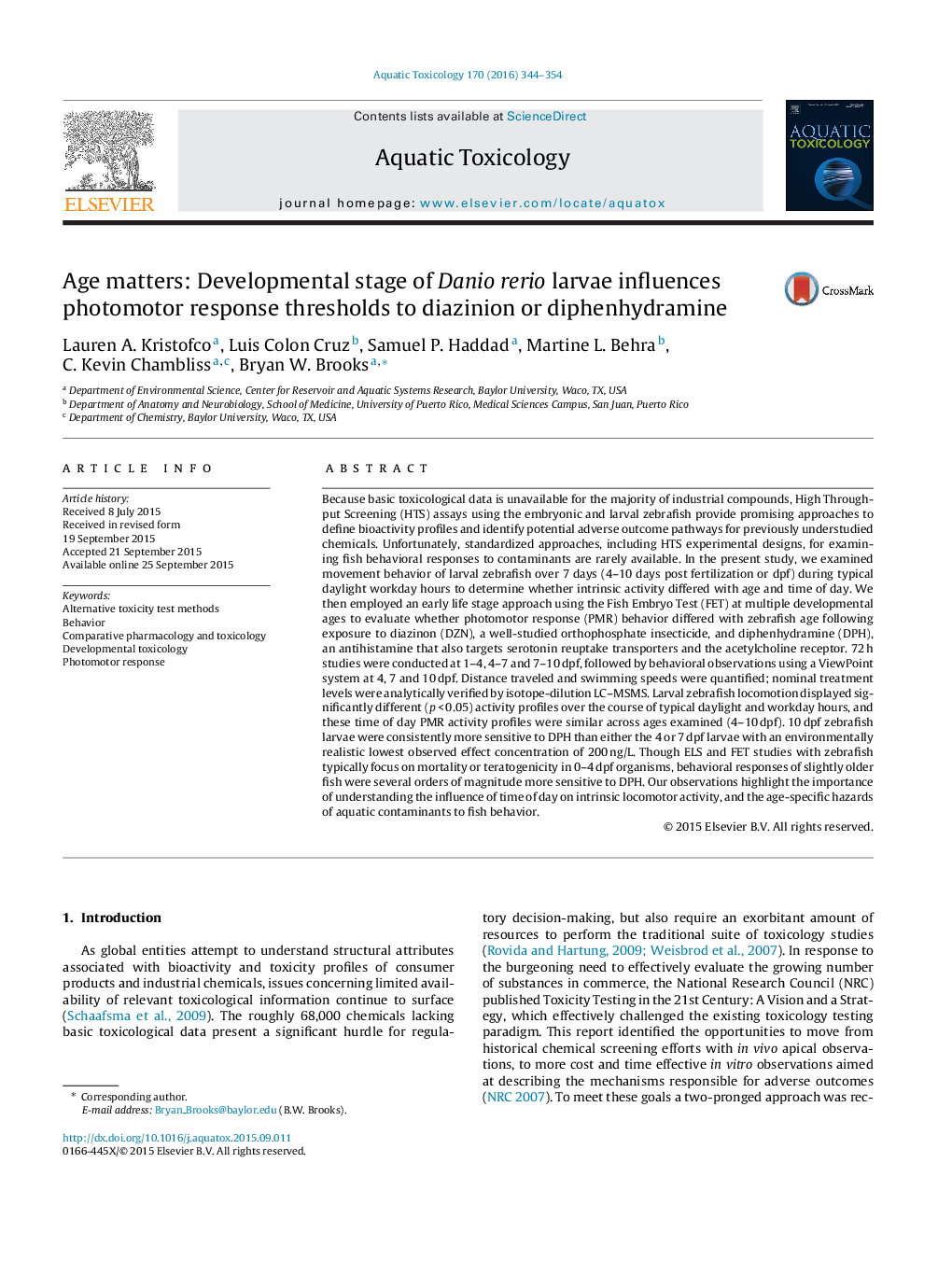| کد مقاله | کد نشریه | سال انتشار | مقاله انگلیسی | نسخه تمام متن |
|---|---|---|---|---|
| 4528995 | 1625935 | 2016 | 11 صفحه PDF | دانلود رایگان |

• Fish behavior impairments by biological active contaminants are limited yet necessary.
• Aquatic toxicology assays with 0–4 dpf larval zebrafish are increasingly important.
• Larval zebrafish locomotion varied with age and daylight during typical workday hours.
• Photomotor behavior to diazinion and diphenhydramine differed by larval zebrafish age.
• Behavioral responses of 7–10 dpf zebrafish were markedly more sensitive than 0–4 dpf.
Because basic toxicological data is unavailable for the majority of industrial compounds, High Throughput Screening (HTS) assays using the embryonic and larval zebrafish provide promising approaches to define bioactivity profiles and identify potential adverse outcome pathways for previously understudied chemicals. Unfortunately, standardized approaches, including HTS experimental designs, for examining fish behavioral responses to contaminants are rarely available. In the present study, we examined movement behavior of larval zebrafish over 7 days (4–10 days post fertilization or dpf) during typical daylight workday hours to determine whether intrinsic activity differed with age and time of day. We then employed an early life stage approach using the Fish Embryo Test (FET) at multiple developmental ages to evaluate whether photomotor response (PMR) behavior differed with zebrafish age following exposure to diazinon (DZN), a well-studied orthophosphate insecticide, and diphenhydramine (DPH), an antihistamine that also targets serotonin reuptake transporters and the acetylcholine receptor. 72 h studies were conducted at 1–4, 4–7 and 7–10 dpf, followed by behavioral observations using a ViewPoint system at 4, 7 and 10 dpf. Distance traveled and swimming speeds were quantified; nominal treatment levels were analytically verified by isotope-dilution LC–MSMS. Larval zebrafish locomotion displayed significantly different (p < 0.05) activity profiles over the course of typical daylight and workday hours, and these time of day PMR activity profiles were similar across ages examined (4–10 dpf). 10 dpf zebrafish larvae were consistently more sensitive to DPH than either the 4 or 7 dpf larvae with an environmentally realistic lowest observed effect concentration of 200 ng/L. Though ELS and FET studies with zebrafish typically focus on mortality or teratogenicity in 0–4 dpf organisms, behavioral responses of slightly older fish were several orders of magnitude more sensitive to DPH. Our observations highlight the importance of understanding the influence of time of day on intrinsic locomotor activity, and the age-specific hazards of aquatic contaminants to fish behavior.
Journal: Aquatic Toxicology - Volume 170, January 2016, Pages 344–354